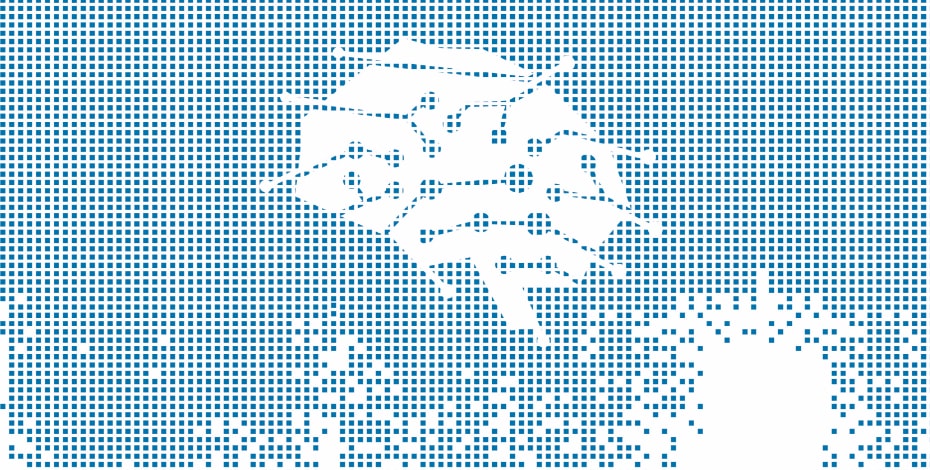
The rehab revolution

The tech-driven pandemic response is changing the way that patients with neurological conditions can continue their rehabilitation.
This surge in digital connectivity is uniting physiotherapists, researchers and patients like never before. The use of telehealth to provide group exercise classes for those with Parkinson’s disease has proved an invaluable tool for clinician and patient, writes Denis Giguere.
The University of Queensland’s Neurological, Ageing and Balance (NAB) clinic is a student- led physiotherapy service for final-year students on their neurological placement.
At the clinic we see a wide variety of community-dwelling client populations with neurological conditions and balance dysfunction, including a large Parkinson’s disease (PD) population.
We, along with the rest of the world, were forced into a rapid telehealth service rollout in March this year. It was a long-talked-about adjunctive service, but something that always seemed a few years away from being a few years away.
This was a new experience for all the relevant stakeholders—clinicians, students, clinic support staff and clients and their families.
Initially, we had only planned to see clients in a one-one-one capacity via telehealth; however, after a few weeks of running telehealth sessions, we realised that we had an opportunity to work with a population in a group telehealth setting—our PD clients.
A significant amount of time, pre-planning and processes were put in place to optimise client privacy and safety including us hosting each meeting so that guests needed to be let into the meeting by the student for each session.
We regularly run an hour-long ‘Parki Blasters’ group once a week, and it was our intention to run this via a private Zoom meeting.
Our PD clients complete programs with a focus on large amplitude movements, incorporating elements of dual tasking and are task-specific, while aiming to work at a high intensity (self-reported RPE 8/10 or greater) where appropriate (King & Horak 2009).
Programs are tailored to focus on each client’s specific impairments and are goal-oriented.
We found that cueing/facilitating this type of exercise in this population was effective in a telehealth setting.
This included using mirroring (or copying movement) (Spaulding et al 2013), client’s voice projection and counting repetitions (Maitra 2007), verbal/auditory cues and setting up in-home visual cues (Nieuwboer et al 2007), which have all been shown to increase amplitude of movement and performance of exercise in PD clients, and are easily facilitated through a screen.
The ‘Parki Blasters’ group was a resounding success. It was run with four clients at a time for 50 minutes, using a conference-calling function so that we were able to monitor all clients at once.
This was important not only for client safety but also to monitor and cue for exercise/ task performance.
The clinician screen was pinned to the video chat so that the client was always able to see the student to facilitate cueing and mirroring—our students understand that if you have run the class well, you should be working as hard as the client.
We kept group numbers small, clients were chosen at similar functional levels and exercises completed in a circuit style, all doing the same activity at once. There were no clinical, safety or privacy incidents during any of the sessions.
These activities focused on common PD impairments and could be completed stationary in front of the camera, including trunk rigidity, lower limb weakness, reduced balance/ postural control and bradykinesia (King & Horak 2009).
The focus of course was to stick to the underlying principles of high-intensity and specific exercises to maximise the treatment dosage.
However, we also thought it was important to give the clients some time at the end of the class to chat. The regular class-goers have formed a community, and in a time of social isolation, we felt it important to give them time to interact, share stories and have some semblance of normality in a very abnormal time.
Our PD clients all reported that they felt the telehealth program was valuable, that they worked at the desired intensity, and that they were satisfied with the service provided. It is our intention to gather more objective data on this (eg, dosage of therapy, functional outcome measures) and compare with the face-to-face program later this year.
We also plan to keep the telehealth program going in a mixed model of client care, to complement the face-to-face service that the NAB clinic prides itself on.
We hope that the telehealth program can increase therapy dose, provide an option for clients who are unable to attend the clinic in-person and facilitate improved performance and intensity of prescribed home exercises in all our client populations—an excellent outcome from a less than ideal situation.
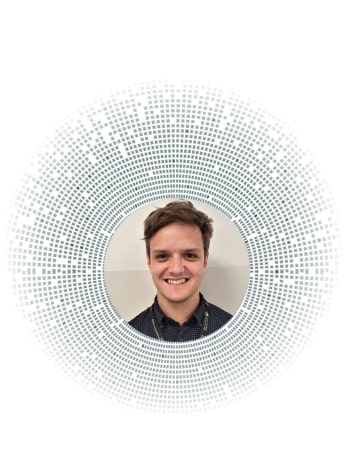
Denis Giguere (left), APAM, is a clinical educator in physiotherapy within the University of Queensland’s Neurological, Ageing and Balance Clinic, where he has worked since February 2020. Prior to this, Denis worked in hospital inpatient and community- based rehabilitation with a particular interest in self-management support post-neurological injury. In 2018, he completed a Graduate Certificate of Rehabilitation, and he is the current lecture coordinator for the APA Neurology group Queensland branch committee.
Maintaining rehabilitation continuity
According to Penina Gunzburg, the uptake of telehealth rehabilitation services for people with acquired brain injury has been on the rise.
The use of digital health has been an emerging reality in my role as a physiotherapist in the Acquired Brain Injury Community Rehabilitation Service at Alfred Health.
Established in 2015, it was one of the first community services that I was aware of in Victoria to have a patient’s electronic medical record embedded into practice from the start.
This contributed to a degree of change readiness and culture which supports digital health.
As an ABI-specific service, our clients are seen mostly in their home or in our Melbourne-based community centre, depending on their goals.
As a state-wide service, our reach to those living beyond practical driving distances or rurally was limited. Patients who required in-person review that could not be met locally would often need to travel long distances, with carer support, to attend our centre.
Given our clients require specialised multidisciplinary input over months to years of their rehabilitation journey, the use of videoconferencing was considered a suitable consideration to meet this need prior to COVID-19.
Our team established a working party of passionate clinicians to address the use of telehealth in our service a few years ago.
With managerial support and executive endorsement, we were able to trial the use of existing software with select patients and staff who showed interest and technical literacy (Vaezipour et al 2019) prior to COVID-19.
In 2019, the working party as ‘telehealth champions’ (Tran et al 2017) established a telehealth guideline specific to the service, created educational and training support specific to our clients’ communication and cognitive needs (Ownsworth et al 2020), and facilitated staff training of videoconferencing and ongoing feedback opportunities.
The use of videoconferencing to deliver rehabilitation for clients with an ABI has been supported in the literature (Chen et al 2015, Laver et al 2013) and found to be acceptable in this population (Vaezipour et al 2019). However, uptake prior to COVID-19 was slow and this is a universal trend (Brouns et al 2019). The coronavirus pandemic provided the urgent impetus for change to meet a service gap that impacted all patients, irrespective of geography (Markus & Brainin 2020).
A snapshot of telehealth usage by physiotherapists within the acquired brain injury community has shown a shift from 0.27 per cent prior to COVID-19 to 28 per cent utilisation of telehealth presently. Clinicians Carol Pham and Suzanne Currie have been using telehealth
to provide physiotherapy services for the acquired brain injury community team during this pandemic, and they provide some insights and reflections of their experience.
The pair say: ‘At first telehealth seemed overwhelming and was approached with some hesitation by the team.
'Physiotherapists traditionally rely on their hands to interact with patients. Whether it is through manual assessment, facilitation of movement or helping patients feel at ease, making the change from face-to-face to telehealth has been a big challenge for everyone involved.
‘Throughout this time, we have learnt not to underestimate our own abilities, nor of our patients to adapt. Telehealth has been transformational.
'As a team, we have surprised ourselves with what we have achieved. Telehealth now forms a part of our everyday practice and we approach it with greater confidence, knowing that we continue to help meet the needs of patients.
‘We feel a sense of achievement when our clients can, for example, stand up on their own or can utilise their carer for community ambulation.
'Upon reflection, we have seen clients taking a greater ownership for their health and wellbeing, and carers are more engaged in therapy sessions. At a time when we need to physically separate ourselves from others, telehealth has provided us with a platform to still support our patients [to] identify goals and work towards achieving them.’
Clinicians provide an essential role for the success of telehealth use (Brouns et al 2019; Hines et al 2017, Ownsworth et al 2020).
The need for clinicians and clients to be involved in the co-design of these services will be important for sustained use (Vaezipour et al 2019).
Future research will be needed to determine which treatments and outcome measures will be suitable with this mode of delivery (O’Neil et al 2019).
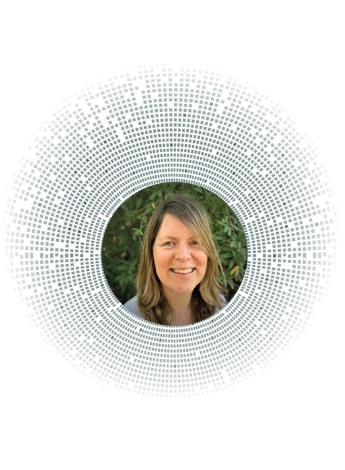
Penina Gunzburg (right) has 20 years’ experience working in the public health sector, most recently in the ABI community rehabilitation service for Alfred Health in Melbourne. Penina has recently completed her Diploma of Leadership (Health and Human Services) and has commenced her master’s with a focus on telehealth research. She is the co-chair of the physical and sensory functioning group as part of the Telehealth Stroke for Community of Practice.
Telehealth shift during clinical placement
The COVID-19 crisis has given Flinders University physiotherapy student Elyse Bell a fast lesson on the importance of adapting to change during her placement with the Multiple Sclerosis (MS) Society of South Australia and the Northern Territory.
During the first week of her placement with the MS Society, physiotherapy student Elyse Bell had to flip her learning from face-to-face sessions to telehealth. It was to last the duration of her five-week placement with the national organisation for people with multiple sclerosis.
‘Adapting the physical assessment to the new platform was just another part of the challenge,’ Elyse says.
‘My supervisor, Margot Strelan, and I started brainstorming how we could continue these tasks without the clients having to come into the office, where they would be at increased risk [of exposure to COVID-19].
‘To address this problem, we learnt how to use Zoom for video sessions and PhysiTrack software to set up clients with home exercise programs,’ she says.
‘We developed how-to and troubleshooting guides, virtual physiotherapy and exercise tips, and a pre-screening questionnaire for one-on-one appointments. We also ran group falls prevention classes online.’
The online class was based on a research project led by Emeritus Professor Sheila Lennon in collaboration with Flinders Master of Physiotherapy alumni. The self- management-focused falls prevention exercise and education program is delivered over six two-hour group sessions.
‘Another great thing about completing appointments via Zoom was that we could see the client’s home environment and they often behaved differently in the comfort of their own home,’ Elyse says.
‘This was great when correcting exercises they were doing, seeing what equipment they were using and observing the environment for safety.’
Elyse says the unexpected changes in her placement, and having to adopt telehealth so quickly, taught her much about being open and adaptable to change.
‘I feel really lucky that I was in a position to help establish and implement telehealth strategies for the MS Society. This placement was like no other due to the diversity in the skills I have acquired, both physio-related and other.
‘I have learnt so much in such a short space of time. It’s opened my eyes to the possibilities ahead of me, and the diversity of skills I’ve gained has helped me to prepare for the many possible career directions.’
Class materials for the falls prevention classes are available by emailing sheila.lennon@flinders.edu.au.

Elyse Bell (left) is a final year student in the Master of Physiotherapy program at Flinders University. Elyse has also worked part-time as a tutor at the University of Adelaide for over two years and as an allied health assistant for the Central Adelaide Local Health Network, including Royal Adelaide and Queen Elizabeth hospitals.
The patient perspective
In April 2016, Brian Beh sustained a left lacunar stroke, which impacted on the function of the right side of his body but not his cognitive skills or speech.
Brian subsequently spent four months in Bankstown Hospital’s Stroke Ward in Sydney, and he continues his rehabilitation daily. Brian discusses his telehealth rehabilitation below.
I have been meeting my physiotherapist, Dr Simone Dorsch, via Zoom and running through a series of exercises designed to improve my walking, stepping and balance.
Then, each day for the following week or fortnight, I do several hundred repetitions of these exercises, timed with my trusty metronome.
At the following telerehab session we again meet (via Zoom) to review my progress and modify the targets to ensure my continual progress and improved walking.
Since I started the program my improvement has been very pleasing—I have improved in all aspects of my walking, stepping and balance. The continued rehabilitation is certainly paying off.
Invariably, once started on my daily reps I keep going and end up doing about 1000 repetitions in total. This is in addition to my walking target of 30,000 steps each day, which I say modestly I achieve. But it has not been plain sailing (or walking!).
I am wearing out walking shoes at a scary rate, plus I have had several painful visits to the podiatrist a while ago to remove corns that had grown. It is sad to say that these pesky nodules are growing back.
I find that telerehab is a great example of cooperation and collaboration between a stroke survivor and a clinician to develop timely, tailored, relevant rehabilitation solutions that meet the challenge of these times we are living through.
When doing my exercises at my home, I do not have the benefits of purpose-built devices such as those available in a physiotherapy gym, which would normally assist with my stepping and walking exercises.
This is where a Russian art theorist and a long- established magazine publisher came to the rescue. The Kandinsky art book together with the Womens’ Weekly Cookbook formed a perfect step for my stepping exercises.
If I wanted to make the step bigger, I simply added another one of the many cook (or gardening) books from my bookshelf.
A stroke survivor’s rehabilitation is not finite—in many instances it is ongoing after the discharge from hospital, so don’t waste the benefit of the rehabilitation you got from those wonderful stroke clinicians while you were a patient.
Talk to your physiotherapist and develop a remote rehabilitation program. I am saddened when I hear about stroke survivors who go home and ‘wallow’ in that seductive lounge chair.
Don’t let the fact that you are at home, or the current coronavirus restrictions, stop you from deriving the enduring benefits of ongoing rehabilitation.
Get creative and utilise objects in your home to aid your rehabilitation—book piles are a good example, stairs can be used, I found gardening (digging soil) a wonderful exercise for my arm/hand. Talk to your physiotherapist first but make sure you are safe at all times.
As well as this program of physical activity, I keep busy mentally—I am a voracious reader, I listen to obscure classical music (currently Estonian music and early English music) and American country music. I am also a regular blogger on stroke-related sites. And I am getting back into writing essays and poetry.
I am not an expert on stroke, but I do know what has and is working for me, and I want to share it with other stakeholders who have been touched by stroke.
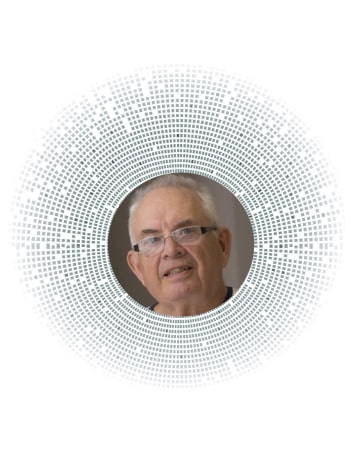
Brian A Beh (right), 72, retired in 2012 after a long and notable career spanning three decades in corporate communications in the Australian financial services industry. Late in his career (during the late ’90s and early 2000s), Brian was heavily involved in organisational/workplace culture, management consulting and change management. He is passionate about improving healthcare and rehabilitation for stroke survivors and educating health professionals and students on strategies to improve care provided and service delivery.
Staying informed with a new community
Bringing together great minds and thinking in the swift uptake of telehealth in stroke rehabilitation has been the driver behind the creation of a new online community. Professor Coralie English details how this new resource is helping physiotherapists and their patients.
In response to the global COVID-19 pandemic, I led an initiative in March to rapidly collate resources to support clinicians with the rapid uptake of telehealth models of care for stroke rehabilitation.
In partnership with the Stroke Foundation, a special resources page on the InformMe website was started. The page has been accessed more than 10,000 times, half of these by people outside of Australia. New content is being continually added and ideas for new information to post are welcome.
On the back of this work and our research work in telehealth, myself and Professor Dominique Cadilhac, from Monash University and the Florey Institute of Neuroscience and Mental Health, set up the Australian Telehealth for Stroke Community of Practice under the umbrella of the NHMRC Centre for Research Excellence in Stroke Rehabilitation and Brain Recovery.
Membership quickly grew, and the group now has 475 people signed up. The mission of this group is to improve the capacity to deliver services for survivors of stroke using telehealth.
Within Australia, there are various pilot projects and clinical programs facilitated by telehealth that are being used for people with stroke or that provide support for secondary prevention.
The Telehealth for Stroke Community of Practice seeks to build capacity in telehealth and establish a sustainable community of practice so that clinicians and researchers can share their knowledge and skills and provide support to each other.
The group contains several special interest streams, and hosts regular webinars and discussions. Membership of the Telehealth for Stroke Community of Practice is free, visit here for more.
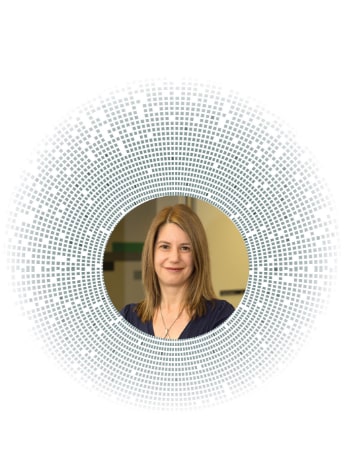
Coralie English (left), APAM, is Professor, Physiotherapy, University of Newcastle, and Deputy Director of the Priority Research Centre for Stroke and Brain Injury, Hunter Medical Research Institute. Coralie leads a team of researchers whose work focuses on understanding the effects of physical activity, aerobic exercise and sedentary behaviours in people after stroke. Her work includes a telehealth- delivered exercise and diet intervention.
A researcher’s perspective
Researcher and physiotherapist Marie-Louise Bird discusses the Telehealth Stroke Community of Practice.
The Telehealth Community of Practice (CoP) brings together a collective perspective on what we know and what we don’t know. It allows us to share experiences and connect people who have similar ideas and want to put energy into similar projects.
This community allows us to discuss, and come to consensus about, priorities for research.
For example, a planned project is to validate outcome measures of mobility for people after stroke via telehealth.
By having a range of voices—clinical and consumer as well as researchers—we are able to focus on answering the questions that are most meaningful to people right now.
Within the last month we were able to collect survey data rapidly (within a week) to find out who in the CoP is delivering what services where and how, if people are new to telehealth and if they need support to start.
Collecting data like this is important for us so that we can target funding to support the work of the CoP.
Our stream will use a range of activities to engage with our members such as virtual journal clubs, case presentations, meet-ups for discussions and sharing resources.
We are also using the CoP for international linkages to group-based programs being delivered via telehealth for Parkinson’s disease as well as stroke to leverage practice in Australia. Visit the Fitness and Mobility Exercise (FAME) program here to discover more about the latter.

Dr Marie-Louise Bird (right) is a clinician–scientist working in a senior position at the University of Tasmania, having returned last year from a two-year post- doctoral fellowship at University of British Columbia with Professor Janice Eng. Marie-Louise’s work includes elements of implementation in working with clinicians and communities to set up programs for people after stroke, both face-to-face and via telehealth. She is investigating the role of carers and peer support in facilitating positive participation in physical and social activities.
References
Denis Giguere
King, L. A., Horak, F. B. (2009) Delaying Mobility Disability in People With Parkinson Disease Using a Sensorimotor Agility Exercise Program. Physical Therapy, 89 (4), 384 – 393. https//doi.org/10.2522/ptj.20080214.
Maitra, K. K. (2007). Enhancement of reaching performance via self-speech in people with Parkinson’s disease. Clinical rehabilitation, 21, 418–424. https://doi.org/10.1177/0269215507074058.
Nieuwboer, A.; Kwakkel, G.; Rochester, L.; Jones, D.; van Wegen, E.; Willems, A.M.; Chavret, F.; Hetherington, V.; Baker, K.; Lim, I. (2007). Cueing training in the home improves gait-related mobility in Parkinson’s disease: The RESCUE trial. J. Neurol. Neurosurg. Psychiatry, 78, 134–140. https://doi.org/10.1136/jnnp.200X.097923.
Spaulding, S. J., Barber, B., Colby, M., Cormack, T. M., Jenkins, M. E. (2013). Cueing and gait improvement among people with Parkinson’s disease: a meta-analysis. Archives of physical medicine and rehabilitation, 94, 562–570. https://doi.org/10.1016/j.apmr.2012.10.026.
Penina Gunzburg
Brouns, B, Meesters, JJL, Wentink, MM, de Kloet, AJ, Arwert, HJ, Boyce, LW, Vliet Vlieland, TPM & van Bodegom-Vos, L 2019, 'Factors associated with willingness to use eRehabilitation after stroke: A cross-sectional study among patients, informal caregivers and healthcare professionals', Journal of Rehabilitation Medicine, vol. 51, no. 9, pp. 665-674.
Chen, J, Jin, W, Zhang, XX, Xu, W, Liu, XN & Ren, CC 2015, 'Telerehabilitation Approaches for Stroke Patients: Systematic Review and Meta-analysis of Randomized Controlled Trials', Journal of Stroke & Cerebrovascular Diseases, vol. 24, no. 12, pp. 2660-2668.
Hines, M, Brunner, M, Poon, S, Lam, M, Tran, V, Yu, D, Togher, L, Shaw, T & Power, E 2017, 'Tribes and tribulations: interdisciplinary eHealth in providing services for people with a traumatic brain injury (TBI)', BMC health services research, vol. 17.
Laver, KE, Schoene, D, Crotty, M, George, S, Lannin, NA & Sherrington, C 2013, 'Telerehabilitation services for stroke', Cochrane Database of Systematic Reviews, no. 12.
Markus, HS & Brainin, M 2020, 'COVID-19 and stroke—A global World Stroke Organization perspective', International Journal of Stroke, vol. 15, no. 4, pp. 361-364.
O’Neil, J., van Ierssel, J., & Sveistrup, H. (2019). Remote supervision of rehabilitation interventions for survivors of moderate or severe traumatic brain injury: A scoping review. Journal of Telemedicine and Telecare, 1357633X19845466. doi:10.1177/1357633X19845466
Ownsworth, T, Theodoros, D, Cahill, L, Vaezipour, A, Quinn, R, Kendall, M, Moyle, W & Lucas, K 2020, 'Perceived Usability and Acceptability of Videoconferencing for Delivering Community-Based Rehabilitation to Individuals with Acquired Brain Injury: A Qualitative Investigation', Journal of the International Neuropsychological Society, vol. 26, no. 1, p. 47.
Vaezipour, A, Whelan, BM, Wall, K & Theodoros, D 2019, 'Acceptance of Rehabilitation Technology in Adults With Moderate to Severe Traumatic Brain Injury, Their Caregivers, and Healthcare Professionals: A Systematic Review', J Head Trauma Rehabil, vol. 34, no. 4, pp. E67-e82.
© Copyright 2024 by Australian Physiotherapy Association. All rights reserved.





